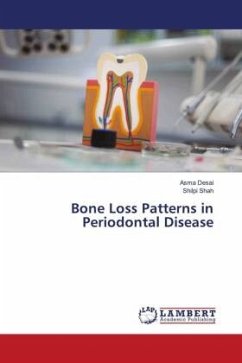
Dermatoglyphic Patterns in Children with Dental Caries
Versandkostenfrei!
Versandfertig in 6-10 Tagen
36,99 €
inkl. MwSt.

PAYBACK Punkte
18 °P sammeln!
Dermatoglyphics (in ancient greek 'derma-skin', 'glyphic - carving'), is the scientific study of naturally occurring patterns on the surface of hands and feet. Dr. Harold Cummins coined the term in 1926 and is regarded as the "Father of Dermatoglyphics". Epidermal ridges on fingers, palms, toes and soles begin to develop during 3rd week of intrauterine life and development is complete by 19th week of gestation. Epithelium of primary palate, finger bud and enamel (most susceptible tissue to dental caries) are ectodermal in origin, develop from same site and same time of intrauterine life. There...
Dermatoglyphics (in ancient greek 'derma-skin', 'glyphic - carving'), is the scientific study of naturally occurring patterns on the surface of hands and feet. Dr. Harold Cummins coined the term in 1926 and is regarded as the "Father of Dermatoglyphics". Epidermal ridges on fingers, palms, toes and soles begin to develop during 3rd week of intrauterine life and development is complete by 19th week of gestation. Epithelium of primary palate, finger bud and enamel (most susceptible tissue to dental caries) are ectodermal in origin, develop from same site and same time of intrauterine life. Therefore, genetic and environmental factors responsible for causing dental caries may also cause peculiarities in dermatoglyphic patterns. Present study explores the significance of dermatoglyphics in dental caries. We support by means of dermatoglyphics that hereditary plays an important role in formation of dental caries.












